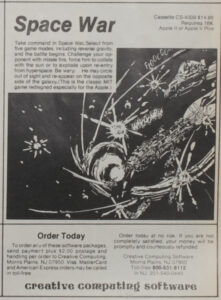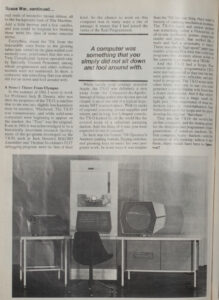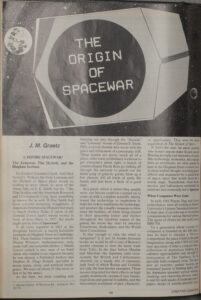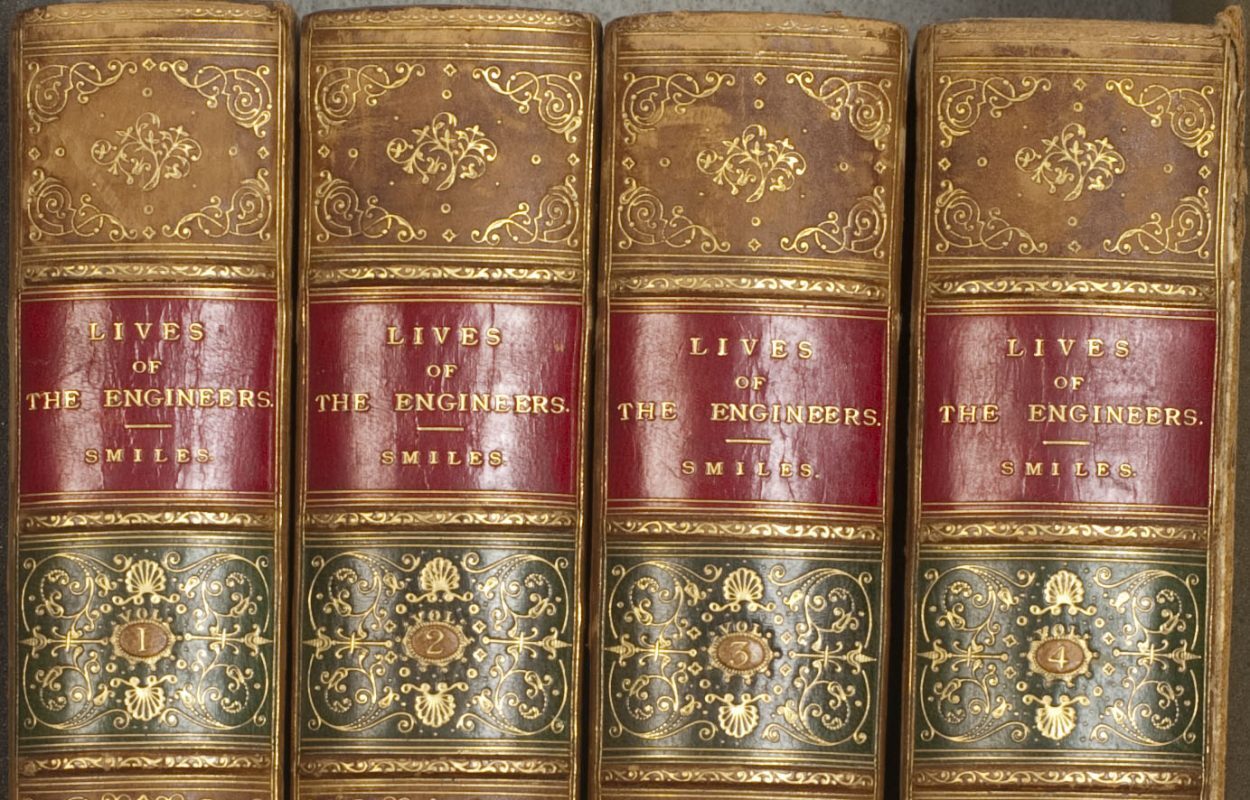Published: Morristown, N.J., 1981
Before World of Warcraft, before Super Mario Brothers or Pac-Man, even before Pong, there was Spacewar!
Not everyone knows it, but MIT holds a unique place in the history of video games. It was here that the first video game intended for computer use – Spacewar! – was invented.
One of the creators of the game, J. Martin Graetz, tells the story of Spacewar!’s development in “The Origin of Spacewar.” The game was conceived by Graetz and his friends Wayne Wiitanen and Stephen R. (Slug) Russell, who referred to themselves as the “Hingham Institute,” named after their apartment on Hingham Street in Cambridge.
 In 1961 Graetz was working for Jack B. Dennis, MIT faculty member (and now Professor Emeritus) in the Department of Electrical Engineering, where Graetz first encountered the TX-O, a computer that took up an entire room. At the time only a few visual programs showed what a computer could really do: Bouncing Ball (literally a dot that would fall to the bottom of the screen, and bounce); Mouse in the Maze, where the user created a maze for an image of a mouse to go through until it located the cheese; HAX, which simply displayed patterns; and Tic-Tac-Toe, which pitted a single player versus the computer.
In 1961 Graetz was working for Jack B. Dennis, MIT faculty member (and now Professor Emeritus) in the Department of Electrical Engineering, where Graetz first encountered the TX-O, a computer that took up an entire room. At the time only a few visual programs showed what a computer could really do: Bouncing Ball (literally a dot that would fall to the bottom of the screen, and bounce); Mouse in the Maze, where the user created a maze for an image of a mouse to go through until it located the cheese; HAX, which simply displayed patterns; and Tic-Tac-Toe, which pitted a single player versus the computer.
Fall of 1961 saw the initial production model of PDP-1, “the first computer that did not require one to have an E.E. degree and the patience of Buddha to start it up in the morning.” Aware that this new machine was on the horizon, Graetz, Wiitanen and Russell brainstormed a demonstration program for it. They wanted their program to show the computer’s abilities pushed to the max, to provide different results each time, and to involve the viewer in a fun way. Their brainchild was Spacewar!
Spacewar!’s basic game play consisted of two ships trying to shoot one another. The opposing ships were simultaneously operating in the gravity well of a central star, so players also risked the destruction that would result from falling into the star itself.
The game’s backdrop was originally made up of a random pattern of stars, but Peter Samson wrote a program that “encoded the entire night sky … between 22 ½° N and 22 ½° S, thus including most of the familiar constellations.” The game was largely ready by the end of April 1962, and was presented at MIT’s Science Open House the following month.
Graetz looks back on his legacy fondly:
Spacewar! itself has bred a race of noisy, garishly-colored monsters that lurk in dark caverns and infest pizza parlors, eating quarters and offering degenerate pleasures. I think I know a few former hackers who aren’t the slightest bit surprised.
Those who’d like to try their hand at Spacewar! today can play it on an online computer emulation, or even download it as an app.

